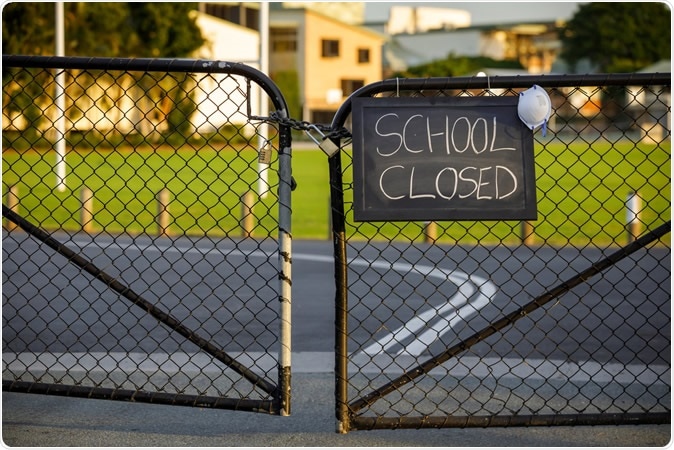With most countries at a standstill, the circulating novel coronavirus has changed the way people live. Though some countries are starting to ease lockdown measures, with schools reopening, health experts worry that this may aggravate the situation. Two new studies provide evidence that children spread the coronavirus and transmit it, making them potential carriers of the infection.
The new evidence suggests that school reopenings happening in various countries may spark a second wave of the outbreak if social distancing measures are not observed. Though no studies prove it, the evidence is compelling to suggest that schools should be kept closed for the time being.
The coronavirus disease (COVID-19), the disease caused by the severe acute respiratory syndrome coronavirus 2 (SARS-CoV-2), is potentially fatal for vulnerable groups, such as those who are older than 60, those with underlying health conditions, and those who are immunocompromised. Though some children contracted the viral infection, most of them experience only mild to moderate symptoms.

School closed, Gold Coast QLD, Australia. Image Credit: Zorro Stock Images / Shutterstock
Social distancing
In the first study, the researchers found that the social distancing measures implemented in China during the pandemic were effective in controlling the virus spread. The researchers from the School of Public Health at Fudan University revealed that intense non-pharmaceutical interventions to stop the spread of the virus, such as social distancing measures, were effective in the country’s fight against the coronavirus.
Aside from that, the team wanted to determine the interplay between contact patterns, age, social distancing, COVID-19 dynamics, and vulnerability to infection.
They analyzed contact survey data for Wuhan and Shanghai before and during the pandemic, including contact tracing data from Hunan Province. They found that social distancing had helped reduce the daily contacts seven to eightfold during the social distancing measures when people were confined inside their homes.
Children between the ages of 0 and 14 years old are less vulnerable to the SARS-CoV-2 infection, while older people are more susceptible.
“Our study provides evidence that the interventions put in place in Wuhan and Shanghai, and the resulting changes in human behavior, drastically decreased daily contacts, essentially reducing them to household interactions. This leads to a dramatic reduction in SARS-CoV-2 transmission. As lockdown measures are put in place in other locations, human mixing patterns in the outbreak period could be captured by data on within-household contacts, which are available for several countries around the world,” the researchers concluded in the study.
The team suggests that social distancing alone is enough to control the novel coronavirus. At the same time, proactive school closures cannot interrupt transmission on their own. The measures can reduce the peak incidence by as much as 40 to 60 percent and delay the pandemic.
Viral loads in children
In another study by researchers at the University of Cambridge, the German Research for Infection Control and the Institute of Virology, Charité-Universitätsmedizin Berlin, aimed to see the difference in viral loads across age groups.
Amid the COVID-19 fight, there is a growing discussion regarding the contribution of school and kindergarten closures to the decrease of the transmission rate. Further, scientists and health experts want to see if reopening schools are safe.
Studies to determine the contribution of children as sources of infection are essential to see if it is fitting to lift restrictions in schools, especially that there are many children crowded in a closed classroom.
The team examined the relationship between age and the coronavirus viral load. They found that the viral load in adults and children is almost the same, suggesting that there should be caution in opening schools, especially in countries that have not yet successfully “flattened the curve.”
Other countries in Asia that have lifted lockdown measures and eased restrictions are seeing increasing cases of COVID-19, with some reporting a second wave of the outbreak. With the new evidence that children are as infectious as adults, even if they do not manifest symptoms, governments should reconsider opening schools at this time.
“The viral loads observed in the present study, combined with earlier findings of similar attack rate between children and adults, suggest that transmission potential in schools and kindergartens should be evaluated using the same assumptions of infectivity as for an adult,” the team suggested.
The countries reopening schools should re-think actions. If children are ample virus spreaders, cases could surge in a matter of weeks, and a second wave of the pandemic might occur. All the efforts of social distancing over the past months will become useless.
Journal references:
- Zhang, J., Litvinova, M., Lian, Y., Yu, H. et al. (2020). Changes in contact patterns shape the dynamics of the COVID-19 outbreak in China. Science. https://science.sciencemag.org/content/early/2020/04/28/science.abb8001
- Jones, T., Muhlemann, B., Veith, T., Drosten C. et al. (2020). An analysis of SARS-CoV-2 viral load by patient age. zoonosen.charite.de. https://www.charite.de/en/.